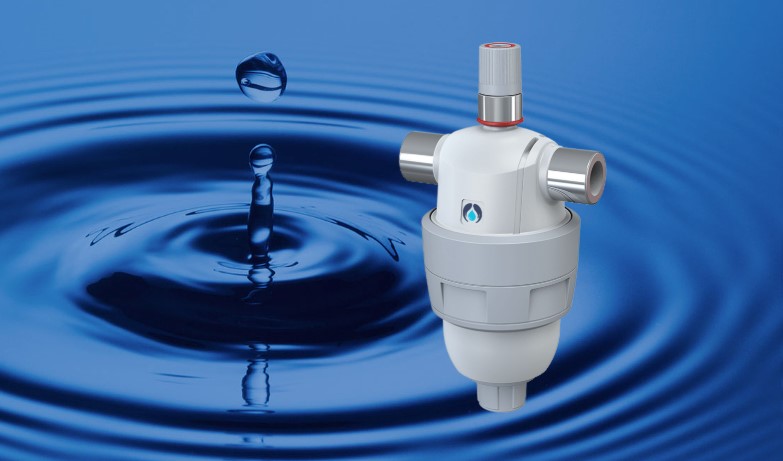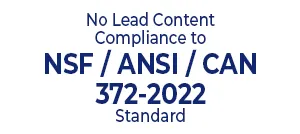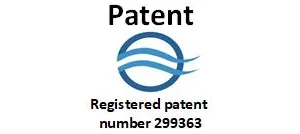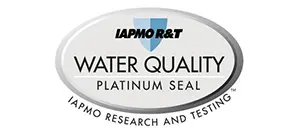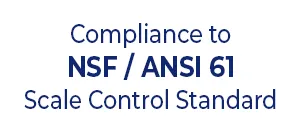Yes, whole house water filtration systems are definitely worth the investment. They provide cleaner water at every point of use in your home, improve taste and odor, protect your health by reducing harmful contaminants, and in the long run, can even save you money on bottled water and plumbing repairs.
Clean water is essential for health, yet many households rely on unfiltered tap or well water that may contain contaminants. While municipal water treatment facilities reduce some risks, concerns about heavy metals, chemicals, and microorganisms persist. This has led many homeowners to consider water filtration systems—but are they worth the investment?
What’s in Your Water?
Before deciding whether a filtration system is necessary, it’s important to understand what could be in your water. The composition of drinking water varies significantly depending on the source:
- Municipal Water: Generally treated to reduce harmful bacteria, but it may still contain chlorine, fluoride, and trace pharmaceuticals.
- Well Water: More vulnerable to contaminants such as arsenic, nitrates, bacteria, and heavy metals, as it lacks centralized treatment.
- Aging Infrastructure: Even treated city water can pick up lead, rust, or other contaminants from old pipes before it reaches your tap.
Testing your water is the best way to determine whether filtration is needed. The Environmental Protection Agency (EPA) and independent labs offer water quality reports that can reveal potential risks.
The Science Behind Water Filtration
Water filtration systems work by targeting specific contaminants through various methods:
Common Filtration Technologies:
- Activated Carbon Filters: These reduce chlorine, sediment, volatile organic compounds (VOCs), and some heavy metals, improving taste and odor.
- Reverse Osmosis (RO) Systems: Highly effective at reducing dissolved solids, including lead, arsenic, fluoride, and certain bacteria. However, they also strip beneficial minerals.
- UV Purification: Uses ultraviolet light to kill bacteria and viruses, often combined with other filtration methods.
- Ion Exchange Systems: Often used in water softeners, these reduce calcium, magnesium, and certain heavy metals.
- Aeration & Gas Release Technology: Advanced systems, such as those from TipaTech, reduce dissolved gases like radon and volatile contaminants, enhancing water safety beyond traditional methods.
- Ceramic Ball Filtration: This method utilizes mineral-infused ceramic balls to enhance water quality. Depending on their composition, ceramic balls can:
- Neutralize acidity and balance pH levels.
- Decrease bacteria by limiting microbial growth.
- Break down chlorine and other harmful chemicals.
- Release beneficial minerals like calcium and magnesium for improved taste and hydration.
Ceramic ball media is often used alongside other filtration technologies to provide a more balanced and health-optimized water source. When combined with aeration, gas release, or reverse osmosis, this method ensures that water is not only clean but also enriched with essential minerals.
Are There Real Health Benefits?
Filtered water can provide health benefits by reducing exposure to harmful contaminants:
- Lead and Heavy Metals: Prolonged exposure to lead in drinking water can lead to developmental issues, especially in children. Filtration systems specifically designed for heavy metals can mitigate this risk.
- Chlorine and Byproducts: While chlorine is used to disinfect municipal water, its byproducts (like trihalomethanes) have been linked to potential health risks. Activated carbon filters help reduce these compounds.
- Pesticides and Pharmaceuticals: Traces of agricultural chemicals and medications have been detected in tap water. Certain filtration systems can significantly reduce these contaminants.
For people with compromised immune systems, infants, or those with specific health concerns, filtered water can be an important safeguard.
Cost vs. Convenience: Breaking Down the Investment
One of the biggest questions people ask is whether water filtration is financially justified. Let’s examine the costs:
| System Type | Upfront Cost | Annual Maintenance | Effectiveness |
| Pitcher Filters | $20 – $80 | $50 – $100 | Limited (chlorine, taste, odor) |
| Faucet & Under-Sink Filters | $50 – $3,000 | $100 – $1,000 | Good (chlorine, lead, some chemicals) |
| Reverse Osmosis (RO) | $200 – $1,500 | $100 – $700 | Excellent (most contaminants) |
| Whole-House Systems | $500 – $10,000+ | $150 – $1,500 | Varies (depends on type) |
While pitcher filters and faucet attachments are affordable, they offer limited protection. Whole-house and reverse osmosis systems provide more comprehensive filtration but require a higher initial investment and ongoing maintenance.
Hidden Costs of NOT Filtering
It’s also worth considering the cost of not investing in filtration:
- Bottled Water Expenses: The average household spends hundreds of dollars annually on bottled water, which can be reduced with an effective filtration system.
- Health-Related Costs: Exposure to contaminants like lead or bacteria could contribute to long-term health issues, leading to medical expenses.
- Appliance Longevity: Hard water and sediment buildup can shorten the lifespan of water heaters, coffee makers, and dishwashers, leading to costly replacements.
- Environmental degradation: plastic bottle polution
Do You Need a Water Filtration System?
Not every household requires an advanced filtration system, but there are key indicators that suggest one might be beneficial:
- You rely on well water or live in an area with high levels of contaminants.
- Your water has an unpleasant taste, odor, or visible sediment.
- You have concerns about lead pipes or old plumbing.
- You want to reduce reliance on bottled water for environmental or cost reasons.
- You or a family member has a weakened immune system or specific health conditions that make clean water critical.
Final Verdict: Are Water Filtration Systems Worth It?
In many cases, the answer is yes—but the right system depends on your specific water quality concerns. Testing your water first will help determine whether a simple filter or a more advanced system is needed.
For those looking for comprehensive protection, technologies like reverse osmosis, activated carbon, and gas release filtration (such as TipaTech’s Air Release patent) offer superior results. TipaTech’s water filtration systems stand out as the only ones in the world that actively release dissolved gases like radon, methane, and other volatile compounds—enhancing water safety beyond traditional methods. This advanced technology not only improves drinking water quality but also benefits household appliances by reducing mineral buildup and corrosion.
Ultimately, while the upfront cost of a filtration system can be a hurdle, the benefits—ranging from improved water quality to potential savings on bottled water and appliance maintenance—make it a worthy consideration for many households. With TipaTech’s cutting-edge solutions, you’re not just filtering water; you’re optimizing it for better health, safety, and long-term peace of mind.
Taking Action: Next Steps
- Test your water for contaminants.
- Compare filtration options based on your specific needs.
- Consider long-term costs, maintenance, and effectiveness.
- Choose a reliable system that provides real protection—not just better taste.
Clean water isn’t just a luxury—it’s a necessity. With the right filtration system, like those from TipaTech, you can enjoy water that’s not just clean, but truly optimized for safety and health.
